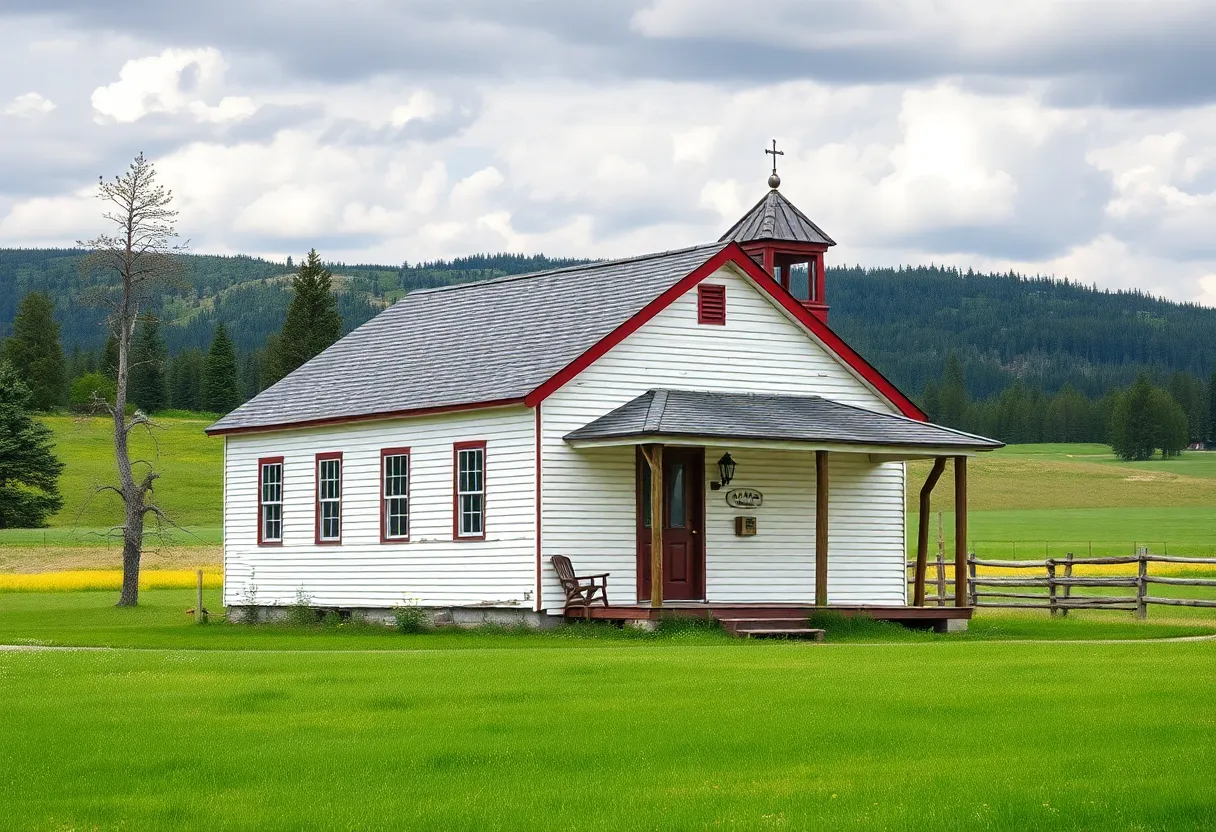News Summary
Montana’s rural schools are experiencing a significant decline despite preservation efforts, facing challenges from demographic shifts and increased administrative burdens. Currently, around 100 rural schoolhouses remain active, a steep reduction from over 2,600 in the past. Initiatives to maintain these historic institutions are ongoing, but many small districts grapple with rising administrative responsibilities, legislative changes, and financial instability, impacting their ability to provide quality education in remote areas.
Montana’s Rural Schools Face Decline Despite Preservation Efforts Amidst Administrative Challenges
Livingston, Montana — Despite ongoing efforts to preserve Montana’s historic rural schools, many of these small educational institutions are experiencing decline due to demographic shifts and mounting administrative difficulties. Currently, approximately 100 rural schoolhouses remain active in Montana, the highest number among U.S. states, although this represents a significant drop from over 2,600 one-room schools statewide in the past.
Current Status of Rural Schools in Montana
Montana’s rural school system is a testament to the state’s educational history. Today, around 50 of the original one-room schools are still operational. One such school, Pine Creek School located south of Livingston, embodies Montana’s rural educational heritage. This school currently serves just 13 students from kindergarten to second grade and offers a unique environment believed to benefit children with shorter attention spans. A teacher with three years of experience at Pine Creek highlights the benefits of small, personalized classrooms.
Preservation Initiatives and Community Engagement
Groups like Preserve Montana focus on documenting, preserving, and repurposing these historic schoolhouses. The organization has identified over 812 surviving one- or two-room schoolhouses across Montana. Preservation efforts involve grants, community involvement, and training aimed at maintaining the structures while adapting them for modern use. One notable project includes assessing an old schoolhouse in Sixteen, Montana — a community once thriving but now predominantly abandoned. Shop owners and descendants of former owners, such as Gaida Hobby Martin and Pamela Ann Hobby Zimmerman, have expressed a desire to restore the building, linking their childhood memories to the site.
Some envisioned uses for these preserved buildings involve transforming them into event venues and educational sites that recreate the ambiance of early 20th-century schooling, particularly the 1920s and 1930s. Such initiatives aim to honor local history and foster community identity.
Administrative Challenges for Small Schools
Despite preservation successes, Montana’s rural schools are under significant pressure from increased administrative burdens. Many small districts employ a single administrator who fulfills roles as both superintendent and principal, a workload that is becoming increasingly difficult to manage amid evolving requirements. Recent revisions by the Montana Office of Public Instruction (OPI) have intensified reporting standards and testing protocols, further stressing school administrators.
Five schools in Flathead County are slated to lose their top administrators due to these rising responsibilities. The legislative landscape has introduced new policies, such as House Bill 203, which promotes school choice but has led to lower enrollment in some districts and consequent closures. Rural districts, like Melrose, face declining student numbers, partly attributable to increased student mobility stemming from these changes.
Financial and Personnel Challenges
The financial stability of small districts relies heavily on local support, which has been strained by legislative reforms. An initiative to shift tuition payments to the county level aims to ease some financial burdens. However, five superintendents across Flathead County have recently announced retirements or resignations, highlighting ongoing difficulties in maintaining administrative continuity.
Impact on Educators and Community Resources
In addition to administrative hurdles, teachers in Montana’s rural areas confront heightened scrutiny and evaluation demands due to new testing standards intended to monitor student progress more closely. These factors combined pose challenges but have not diminished many administrators’ dedication to keeping small, rural schools operational, recognizing their vital role within local communities.
Background and Context
Montana’s rich history of rural schooling reflects a once extensive network of one-room schoolhouses, essential to early rural life. While most have disappeared, preservation efforts continue with community involvement and statewide initiatives. At the same time, legislative and demographic challenges threaten the sustainability of these schools, prompting discussions about resource allocation, administrative capacity, and the future of rural education in Montana.
Deeper Dive: News & Info About This Topic
HERE Resources
Additional Resources
- KTVH: Preserving the Past – Montana’s Rural Schools Closing at an Alarming Rate
- Flathead Beacon: Education for Rural Schools in Montana
- Daily Montanan: U.S. Senate Passes Bill Reauthorizing Funding for Rural Schools
- Whitehall Ledger: Montana Rural Teacher of the Year
- Wikipedia: Rural School
Author: STAFF HERE VIRGINIA BEACH WRITER
The VIRGINIA BEACH STAFF WRITER represents the seasoned team at HEREVirginiaBeach.com, your trusted source for actionable local news and information in Virginia Beach, Virginia Beach City, and beyond, delivering "news you can use" with comprehensive coverage of product reviews for personal and business needs, local business directories, politics, real estate trends, neighborhood insights, and state news impacting the region—supported by years of expert reporting and strong community input, including local press releases and business updates, while offering top reporting on high-profile events like the Virginia Beach Neptune Festival, East Coast Surfing Championship, and military homecoming celebrations, alongside key organizations such as the Virginia Aquarium, Virginia Beach Convention Center, and Oceana Naval Air Station, plus leading businesses in tourism and defense like Busch Gardens and Northrop Grumman, and as part of the broader HERE network including HEREWilliamsburg.com, providing credible, in-depth insights into Virginia's vibrant landscape. HERE Virginia Beach HERE Williamsburg





